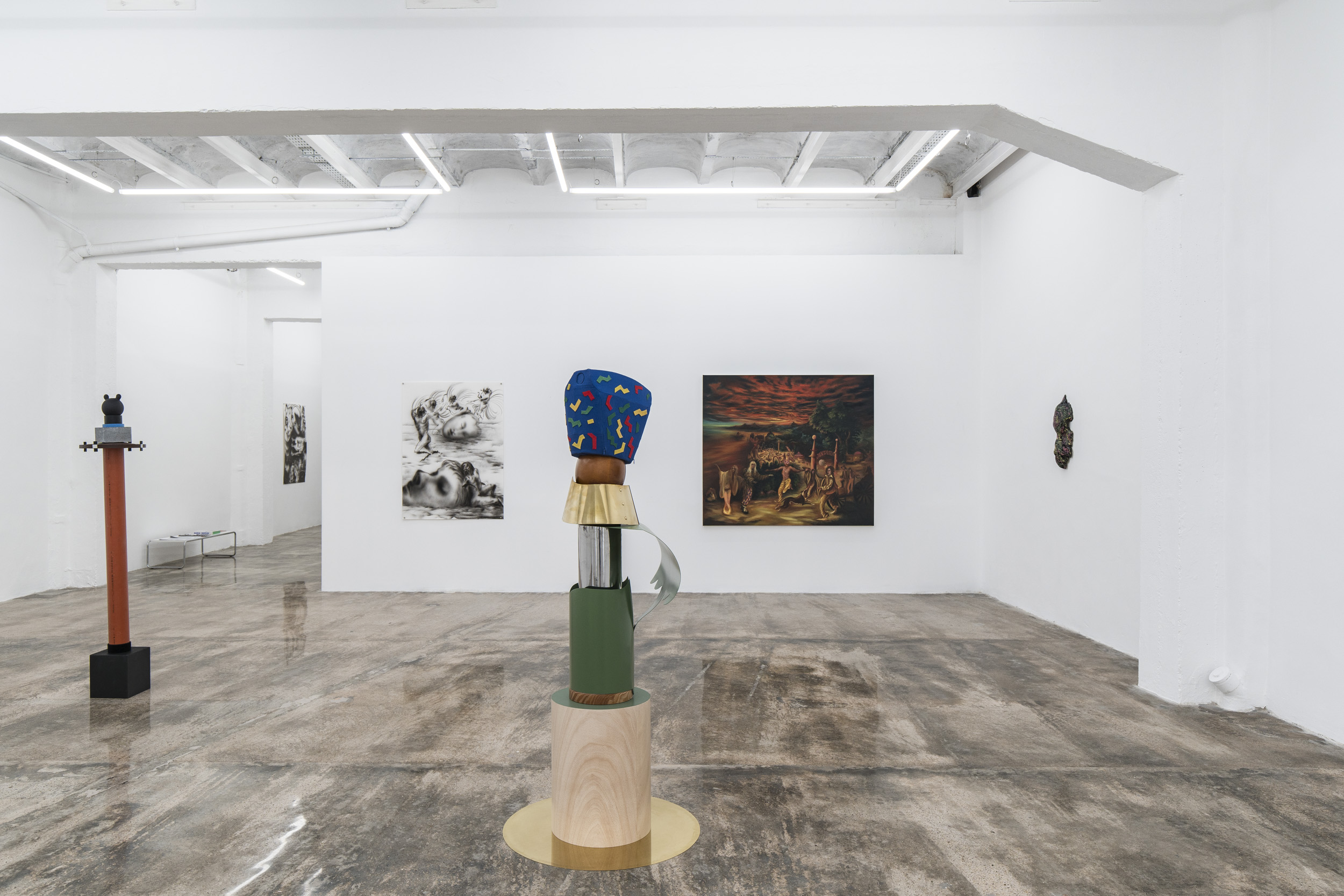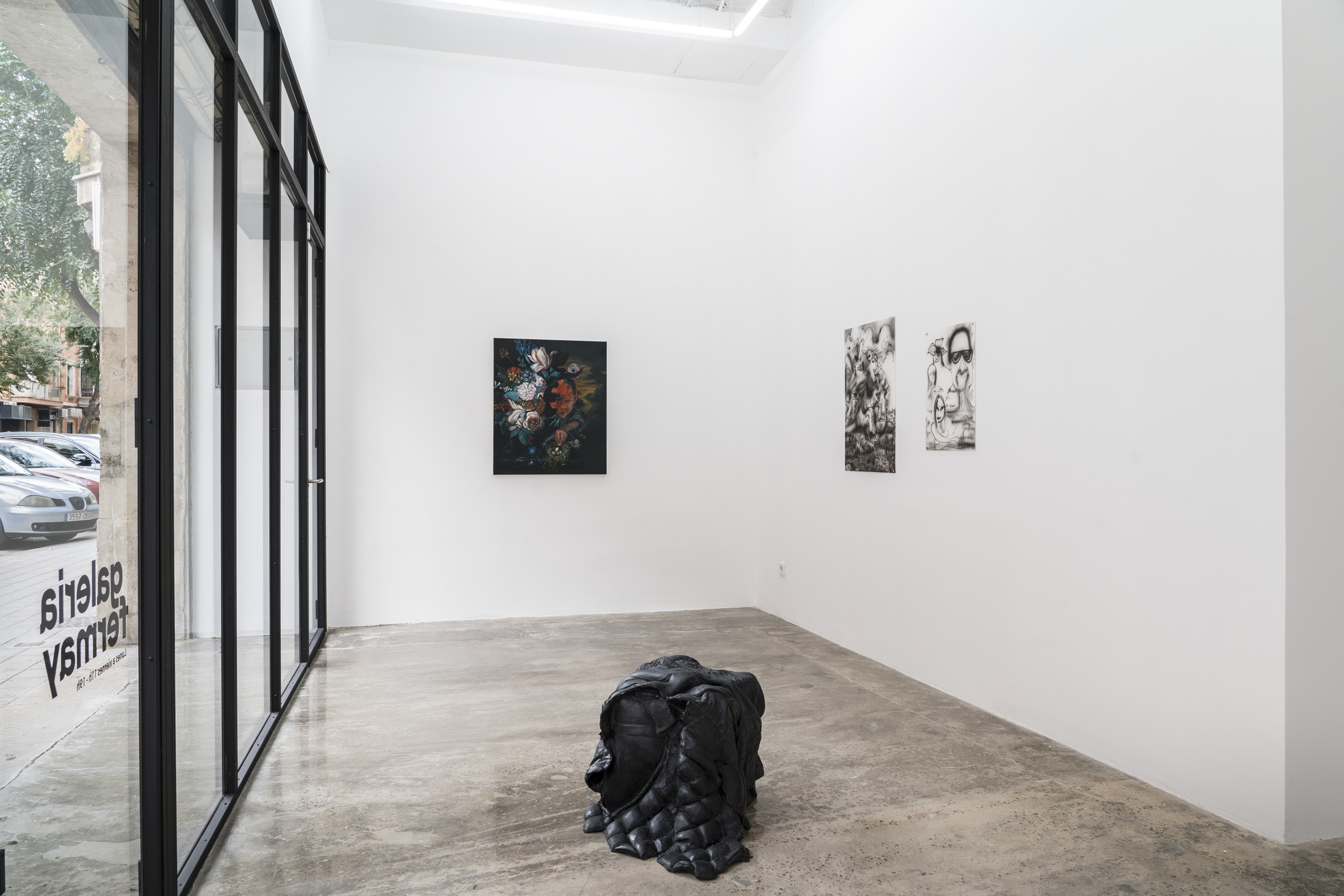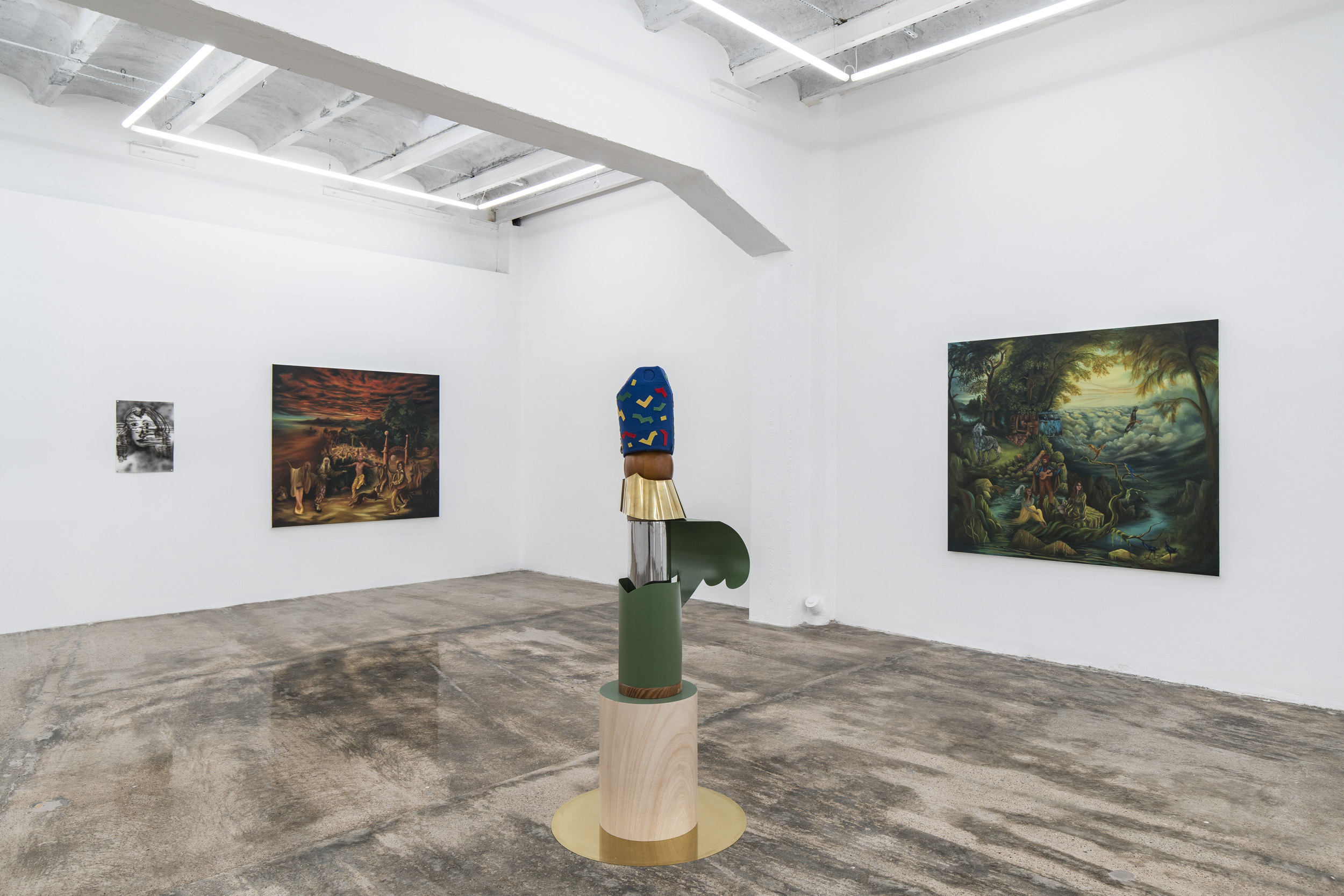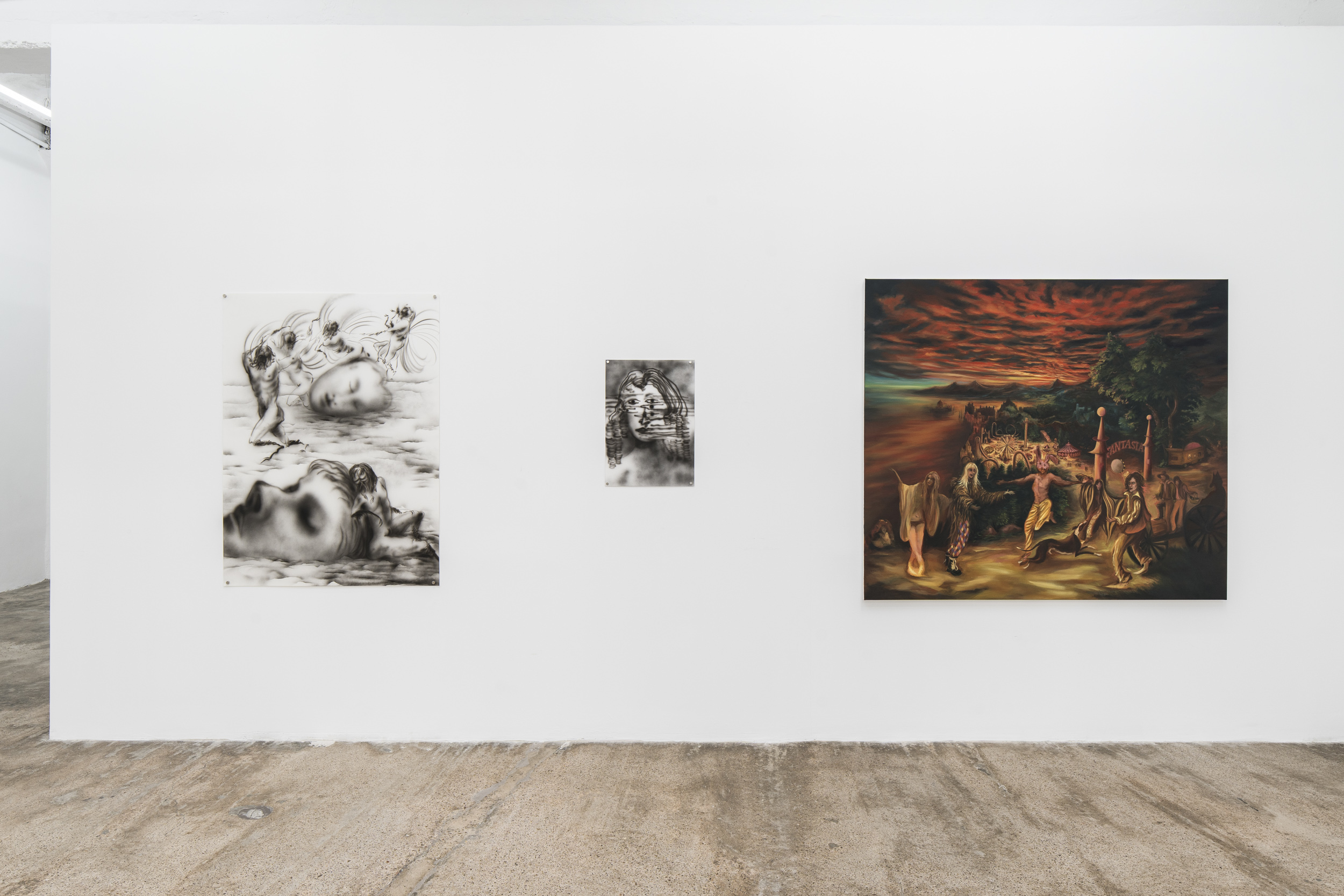THE MELEE | NIT DE L'ART
23.09 ––10.11.2023
02 - 07. 12. 2025 BAIT AND TACKLE
22.11.2025 –– 20.02.2026 EN FORMA | NIT DE L'ART
20.09 –– 14.11.2025 AÑO TRES | Art Palma Summer
05.06 –– 05.09.2025 Trazos y espacios | Art Palma Brunch
22.03 –– 30.05.2025 ARCOmadrid 2025
05.03 –– 09.03.2025 UNTITLED Art Fair Miami
04.12 –– 08.10.2024 FAIRY TALES
25.11.24 –– 24.01.25 SWAB ART FAIR 2024
03.10 –– 06.10 2024 GALAXY BALLROOM | NIT DE L'ART
21.09 - 15.11.2024 CAN ART FAIR IBIZA
26.06 - 30.06 2024 Space In Between | Art Palma Summer
06.06 –– 13.09.24 ARCOmadrid 2024
06.03 –– 10.03.24 ET FUGA | Art Palma Brunch
23.03 –– 31.05.24 MIENTRAS TU SUEÑAS
24.11.2023 –– 02.02.2024 SWAB Art Fair Barcelona (5-8 oct)
MALE MALE
23.06 ––15.09.2023 AMARILLO PÚRPURA - Art Palma Brunch 2023
25.03 –– 26.05 2023 True North
03.02 –– 17.03.2023 TERERÉ
11.11.22 –– 27.01.23 FLOOP
17.09 — 05.11.2022 Here We Go
09.07——02.09.2022
Galería Fermay is pleased to present The Melee, a group exhibition that includes the work of Nadia Barkate, Alex Hudson and Nadia Naveau.
This exhibition brings together the work of three international contemporary artists whose body of work is the result of a complex entanglement of concepts and varying approaches. There is an intrinsic freedom and playfulness in the way they conceive and develop their respective experimental languages —drawing from a wide range of influences, from art’s deepest historical traditions to today’s popular visual culture, these artists produce a body of work that feels loosely familiar and close enough to recognise a common ground while also creating a fundamental element of estrangement.
The Melee presents a set of artists that produce their body of work by essentially bringing things together. But of course, a compendium of images and references does not make an artwork — instead, they develop conceptual strategies that allow them to surgically extract certain formal elements to later re-contextualise them, thus creating whole new readings. By taking on the idea of appropriation but staying well away from the heavily loaded art term “Appropriation”, these artists are closer to the idea of sampling and rewiring. The latter should not be misinterpreted as a detached approach to art making, but quite the contrary, as their artistic practices stand out for an acute formal awareness and deep sense of intimacy. While artists associated with Appropriation art made use of visual imagery from the art tradition and pop culture to make a comment on consumerism, identity politics or the mass media, and to question the mystique of authorship in art, the artworks presented in this exhibition are characterised by a cumulative, epic and self-referential tone that underlines and celebrates their distinctive styles.
Distant echoes materialise in an exuberant array of imagery that coalesces in fascinatingly productive and ambiguous ways. There is an evident concern with the idea of the image, not only as a representational tool, but as a means of perceiving and negotiating reality. From a viewer’s perspective, The Melee is as familiar as it is intriguing and unfathomable — while there are indeed many recognisable images and potential narratives in place, the artists deliberately cancel any form of linear reading so as to challenge traditional ways of making meaning. By doing so, they force the viewers to work his/her head around and reposition itself every time s/he is confronted with the artworks on display.
Nadia Barkate’s work is built upon a distinctive combination of figurative imagery that ranges from those reminiscent of classic Antiquity and Surrealism to self-portraits and personal graphisms —all of which result in scenes close to the realm of a daydream. In the artist’s hands, discordant imagery rhythmically flows in a symphonic fashion, suggestive but never obvious. The technique of airbrushing allows her to work at quite a fast pace, which reinforces the associative and performative nature of her creative process. There is a cinematic element running through all her practice that crystallises in episodic scenes build on the dynamic relation between images and the illusion of narrative. As the artist herself states, her work is eminently metaphorical and close to the realm of poetry; it is through a vast array of images that she vehicles thoughts, desires and dreams.
Within this whole visual whirlwind there is a formal coherence that constitutes the backbone of her practice. Black and white imagery, the repetition of certain visual elements and the intricate nature of her compositions point to a methodological, often obsessive artistic practice destined to explore the possibilities of the medium. Barkate works expansively, voraciously at times, especially when it comes to large format artworks where images are entangled in fantastically complex ways. Although Barkate’s work might be characterised by its whimsical nature and dreamy landscapes, her practice also points to the realm of the quotidian and tackles issues around identity, the body and desire. In her lexicon of signs and symbols there lies a form of introspection that explores an array of subjectivities and, to a certain extent, also the realm of the subconscious. Nadia Barkate makes her viewers accomplices of her imagining, which gravitates between the celebratory and the mythical.
The work of Alex Hudson is a conceptual enquiry about painting itself, an entanglement of concepts and references that crystallise in meticulously crafted compositions that are usually domestic scenes, portraits or landscapes. As the artist himself states, his latest body of work comes from a personal place, something that allows him to reflect on what motivates him to paint; from academic ideas such as art historical, philosophical or sociological sources to the actual reward of painting itself (the wrestling with the image, so to speak). Alex Hudson’s paintings require long, slow viewing to appreciate their complexity of composition, use of scale, and abundance of symbols. All together, they forge unexpected links between periods and places, history and the present, that mostly come from art historical references but also from modern and contemporary visual archetypes.
Hudson’s practice clearly shows a passion for the medium and a formal command of it which allows him to explore the realm of the symbolic while also introducing autobiographical elements and references to real places. And he does so by looking at the work of the Old Masters, such as Pieter Bruegel The Elder or Pieter Paul Rubens so as to continue, but also to update a form of painting essentially built on the allegorical. Through his work, Alex Hudson explores the psyche of his characters but there is also a clear effort to investigate the depth of human emotions and to question our shared social and cultural horizon. There is a form of magic realism underlying all his work that pulls the viewer into the complex scenes on view, where we usually find an eccentric iconography of human beings caught in the middle of mundane actions. The fact that most of his characters seem indeed to be outcasts cut off from the world gives us the sense of witnessing an alternative reality that sometimes suggests a state of existential melancholy and overall disenchantment, and other times looks like a portrait of humanity celebrating new realms of freedom.
Nadia Naveau’s distinctive body of work is an ongoing investigation into sculpture through the exploration of materials, processes and subjects. There is a coalescence of many sculptural traditions in her work, from Baroque and Modernist references to the inclusion of elements associated with popular culture. Her work is primarily concerned with the use of and manipulation of certain materials such as plaster, clay or bronze, in combination with other formal elements such as light, scale and colour. While theory and concepts play a fundamental role in her practice, the artist is mostly concerned with the actual making, which results in a wildly diverse and innovative body of work that ranges from traditional sculpture to assemblage, installation and collage. Her experimental line of inquiry allows her to push the boundaries and question the status of the medium.
Nadia’s work is largely associative, meaning she operates with a high degree of freedom when she comes to create her sculptural ensembles. Being able to accommodate such a vast array of references and compositional elements leads to a highly aestheticized and evocative artistic vocabulary that in its complexity provokes a natural engagement with the viewer. Behind this profusion of imagery, however, there is a carefully orchestrated body of work interested in notions that relate to history and systems of representation. In a way, Naveau’s work makes apparent the artifice that is intrinsic in all forms of art —that is, a kind of theatricality that makes a productive use of the ambiguity inherent in images while also activating the imagination of the viewer. Her ingenious and unguarded sense of humour adds another layer of meaning to her work as she embraces the chaotic and the absurd, understood here as formal qualities and a strategy to double the impact. All the above combined makes Nadia Naveau’s oeuvre a kaleidoscopic construct made primarily from fragments that belong to our own visual culture, which in a way turns her work into a mirror of ourselves.
This exhibition is kindly supported by Departament de Cultura i Patrimoni del Consell de Mallorca






